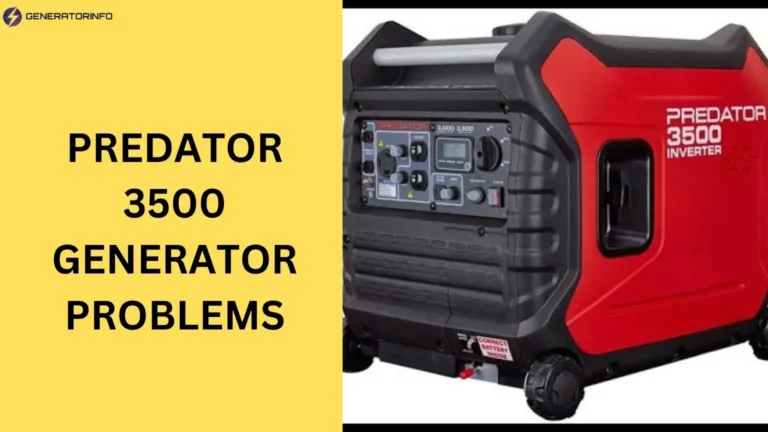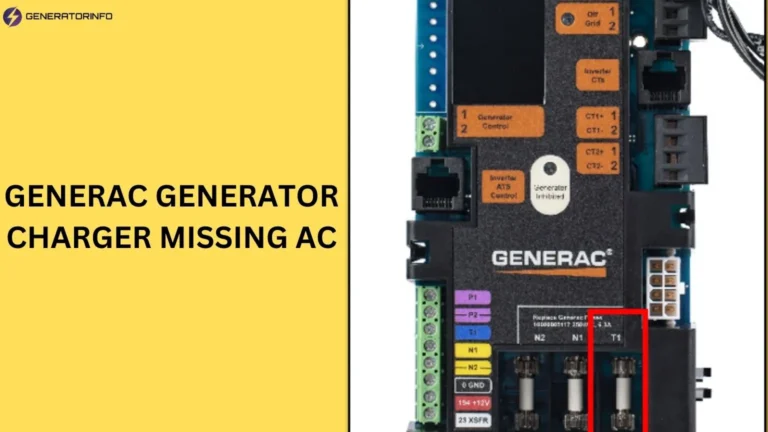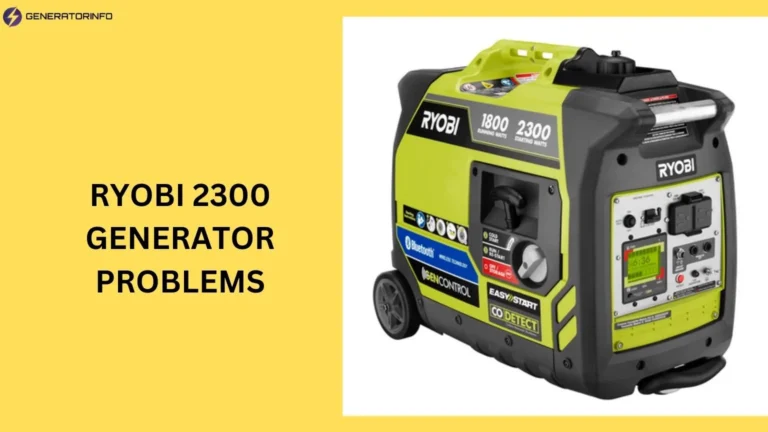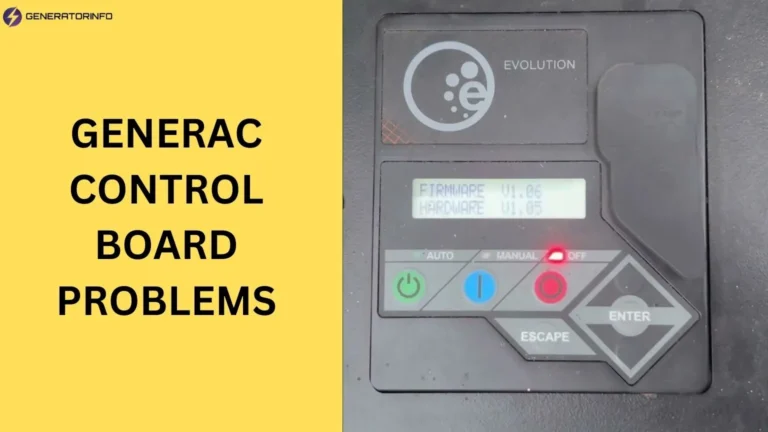Tailgator Generator Problems (Troubleshooting) 2025
Tailgator generators are popular for their portability and efficiency in providing power during outdoor events, camping trips, and emergencies.
However, like any machine, they can encounter issues that may disrupt their functionality. Understanding common problems and how to troubleshoot them can ensure you get the most out of your Tailgator generator.
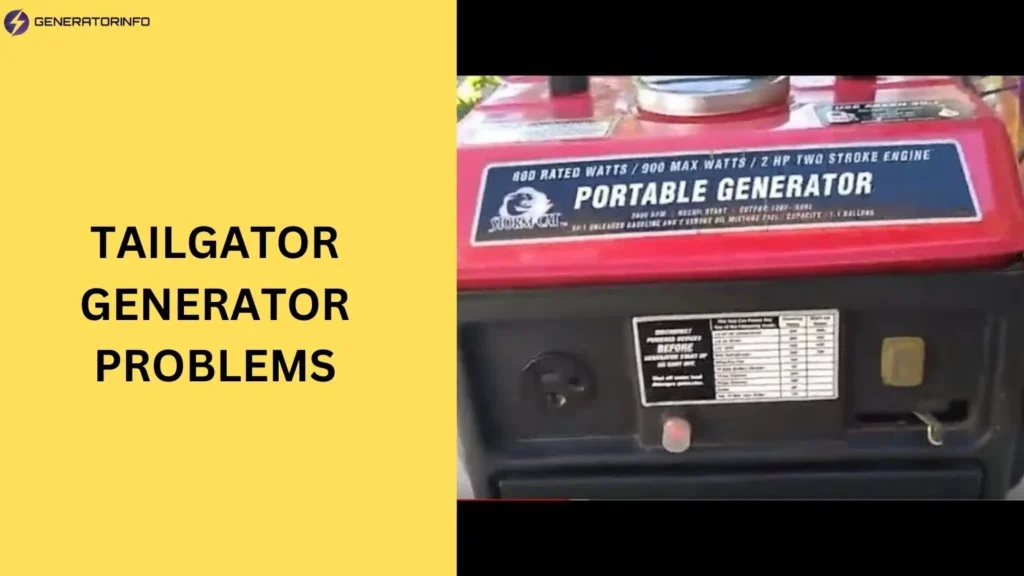
Introduction
Tailgator generators are compact and reliable power sources, prized for their versatility. Whether used for tailgating parties or as emergency backups, these generators provide convenience.
However, users often encounter various issues that can hinder their performance. This article explores common Tailgator generator problems and offers practical solutions.
Understanding Tailgator Generators
Tailgator generators are known for their lightweight design and ease of use. They typically run on gasoline and come in various sizes to suit different power needs.
These generators are equipped with engines that convert mechanical energy into electrical power, making them essential for outdoor activities and emergencies alike.
Common Tailgator Generator Issues
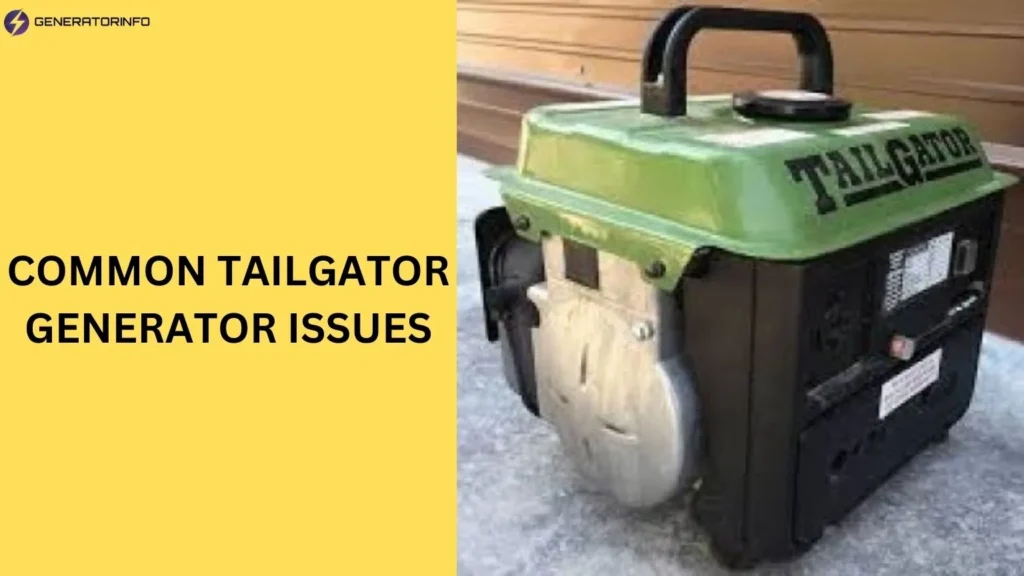
Tailgator generators are renowned for their portability and convenience, but like any mechanical device, they can encounter issues that affect their performance.
Understanding these common problems and their solutions can help ensure your Tailgator generator operates reliably when you need it most.
Starting Issues
One of the most reported problems with Tailgator generators is difficulty starting. This issue can stem from several factors, including stale fuel, a clogged carburetor, or a faulty ignition system.
When your generator fails to start, it can be frustrating, especially in critical situations where immediate power is needed.
Engine Running Rough
A rough-running engine can indicate underlying issues such as dirty fuel filters, improper oil levels, or worn-out spark plugs.
This problem not only affects performance but also increases fuel consumption and emissions.
Addressing engine roughness promptly can prevent further damage and ensure optimal generator operation.
Electrical Malfunctions
Generators may experience electrical malfunctions like power surges, voltage drops, or even complete power failure.
These issues could be caused by overloaded circuits, damaged wiring, or faulty components within the generator’s electrical system. Proper diagnosis and repair are crucial to restore normal functioning.
Overheating Problems
Overheating is a common issue, especially when generators are operated continuously or at high ambient temperatures. It can lead to engine shutdowns and potential damage if not addressed promptly.
Monitoring coolant levels, ensuring proper ventilation, and scheduling regular breaks for the generator can mitigate overheating risks.
Troubleshooting Tailgator Generator Problems

Tailgator generators are handy tools for outdoor activities and emergency power needs. However, like any machinery, they can experience issues.
Troubleshooting these problems can often restore the generator’s functionality without the need for professional repair. Here’s a guide to help you identify and fix common issues with your Tailgator generator.
Checking Fuel Supply
Ensure the generator has an adequate supply of fresh gasoline. Stale fuel can prevent the engine from starting or cause it to run inefficiently. Use fuel stabilizers to extend the shelf life of gasoline stored for long periods.
Inspecting Spark Plug
A dirty or worn-out spark plug can hinder ignition, leading to starting issues or engine misfires. Remove the spark plug periodically to clean or replace it as needed according to the manufacturer’s recommendations.
Cleaning Air Filters
Clogged air filters restrict airflow to the engine, affecting combustion efficiency. Regularly clean or replace air filters to maintain optimal engine performance and prevent overheating.
Examining Oil Levels
Check the generator’s oil levels before each use and change the oil as recommended by the manufacturer. Low oil levels can cause engine damage, while dirty oil can reduce lubrication effectiveness.
Preventive Maintenance Tips

Preventive maintenance is crucial to ensure the longevity and reliable performance of your Tailgator generator.
By following these maintenance tips, you can avoid common problems and keep your generator running smoothly.
Regular Oil Changes
Follow the manufacturer’s guidelines for oil changes to keep the engine running smoothly. Clean oil reduces friction and prolongs the life of engine components.
Fuel Stabilization
Use fuel stabilizers when storing gasoline for prolonged periods to prevent fuel degradation and carburetor issues. Stale fuel can clog the generator’s fuel system, leading to starting and performance problems.
Keeping It Clean
Regularly clean the generator’s exterior and components to prevent debris buildup that can affect cooling and ventilation. A clean generator operates more efficiently and has a longer lifespan.
Storing Properly
Store the generator in a dry, ventilated area when not in use to protect it from environmental elements and reduce the risk of corrosion. Cover the generator with a weatherproof tarp if stored outdoors.
When to Seek Professional Help?
While many issues with Tailgator generators can be resolved through basic troubleshooting, there are times when professional assistance is necessary.
Knowing when to seek expert help can prevent further damage and ensure your generator is repaired correctly. Here are scenarios where professional intervention may be required:
Complex Electrical Issues
If you encounter complex electrical problems like recurring power surges or complete outages, it’s best to consult a qualified technician. Electrical repairs require expertise to ensure safety and proper functioning.
Engine Overhauls
For major engine issues such as persistent overheating or severe performance degradation, professional inspection and repair may be necessary. Attempting complex repairs without proper knowledge can worsen the problem.
Warranty Concerns
Refer to the generator’s warranty terms for coverage of specific issues. Attempting DIY repairs that void the warranty can result in additional costs or loss of coverage for future repairs.
People also ask
What is the common problem of generators?
The most common problem with generators is starting issues, often caused by stale fuel, clogged air filters, or a malfunctioning spark plug.
What would cause a generator not to produce power?
A generator might not produce power due to issues like a tripped breaker, faulty alternator, damaged wiring, or a malfunctioning voltage regulator.
How do you diagnose a generator problem?
To diagnose a generator problem, check the fuel level, inspect the spark plug, examine the air filter, ensure the circuit breaker isn’t tripped, and look for any visible damage to the wiring and components.
Why is my generator not kicking on?
Your generator may not kick on due to several reasons, including low fuel levels, a dead battery, a faulty starter motor,
or issues with the ignition system such as a bad spark plug or ignition switch. Checking these components can help diagnose the problem.
Conclusion
In Conclusion, Understanding and addressing Tailgator generator problems promptly can prolong their lifespan and ensure reliable performance when needed.
By following preventive maintenance tips and knowing when to seek professional help, you can maximize the efficiency and durability of your generator.

